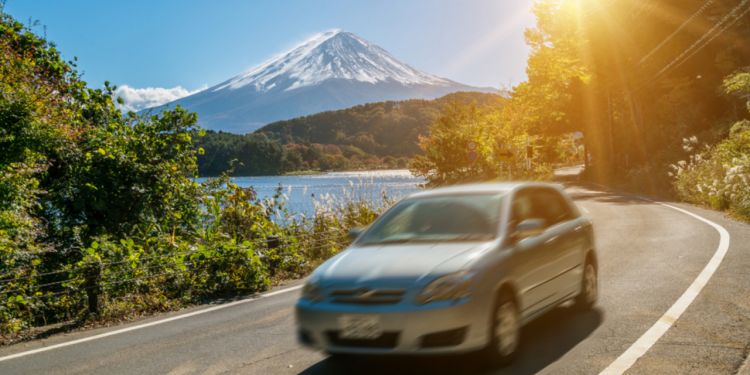Driving in Japan

Driving on the left side of the road will soon have no secrets for you. What are the rules for driving in Japan? Here's a practical guide to taking on Japanese roads safely.
Cars in Japan
Driving on the left
In the Land of the Rising Sun, the steering wheel is on the right side, so you'll be driving on the left side. In any case, driving in Japan will take some time to adapt. You will have the impression that everything is reversed, and you might use the windshield wipers instead of the turn signal. But there's no need to panic; it will come with practice. However, avoid finding yourself on a 5 or 6-lane highway on your first day of driving. Take a good look at your surroundings. Start by driving on small roads.
Car sizes
Be aware of the size of your vehicle. It will fit on the main roads, but you may feel a little cramped when driving through the narrow streets of the local neighborhoods. You will understand better the utility of the famous square car, the Japanese car. It is compact and automatic and can easily fit into small streets. The other particularity of Japan is the slopes. Some roads are very steep. For more comfort, opt for an automatic car. In fact, most Japanese cars are automatic, whether they are square or not.
Japanese roads
There are very few roundabouts in Tokyo. They are slightly more common in smaller cities. In big cities, there are more major roads and intersections. Don't be surprised if you find yourself lined up with 8 other cars before an intersection. It is impressive, especially if you are not used to driving on such wide lanes. Even pedestrians are afraid they won't make it to the next light before the cars start. Don't worry. You'll soon get through these giant intersections.
Japanese traffic regulations
Traffic signs
In Japan, international traffic rules are applicable. The road signs are generally similar to the ones you may know. The words are written in kanji and letters. You will sometimes see a red TOMARE (止まれ) sign without any translation. TOMARE may also be written large on the road (often on small streets). This is the STOP sign. "Tomare" means "stop". Don't worry: even without a translation, the TOMARE sign is always behind a large white line, the international STOP sign. Find out more by clicking on the useful links at the end of the article (road signs in Japan).
Driving on the highway
There might be a difference in Japanese highways when compared to European or American ones. Forget about going over 100km/h. In Japan, the speed limit is 80km/h. Very few roads allow a slightly higher speed. Don't try to step on the pedal. The police do not joke with the traffic rules. If you want to wake up your pilot's spirit, better go and test your aptitudes on the racing simulators in a game center.
International driving license in Japan
In Japan, having an international license is not always enough to drive. If your country has signed the 1949 Geneva Convention on Road Signs and Signals, you will be able to drive in Japan with an international driver's license for one year maximum. Beyond that period, you will not be able to drive in Japan.
Many countries are in this 2nd case, like France, a State signatory of the Vienna Convention on Road Traffic in November 8, 1968. However, the Geneva Convention is no longer recognized by France, and Japan applies the latter. Hence, to be able to drive in Japan, there are two possibilities.
You are only visiting Japan
If you do not live in Japan but are only visiting, you can drive with your original license, as long as you have a certified translation, for a maximum period of one year. You can have your license translated at the Japan Automobile Federation (JAF) or at your Embassy in Japan.
To apply for a translation, you will need to submit a dedicated form (available on the JAF website), and a color scan of both sides of your license, and if you are a resident, you will need to produce a color copy of your resident card.
You are living in Japan
You must have a Japanese driver's license. During your first year in Japan, you will be authorized to drive with your original license along with its certified translation. But from the second year, you will need to have a Japanese driver's license.
Converting your original license to a Japanese license
Your Japanese driver's license is actually a conversion of your original license. Make sure that your nationality allows you to just convert your driver's license without having to pass a driving test all over again. The driver's license conversion is called "gaimen kirikae".
You will then need to go to a driver's license facility with your driver's license and its certified translation, your resident card, your passport, a certificate of residency issued by the city hall and two passport-size photos. You will have to undergo a vision and hearing test on site. The fees are calculated according to the type of license you hold. For a classic license (B license), you will have to pay 4,000 to 8,000 yens on average. Your Japanese license will be valid for 2 to 3 years (renewable).
You are now ready to drive on the Japanese roads. Fasten your seatbelt and enjoy your trips!
Useful links:
Driving Japan – have your license translated into Japanese









